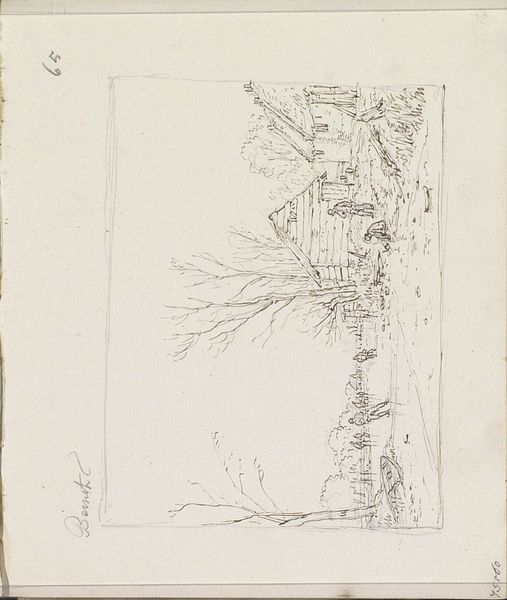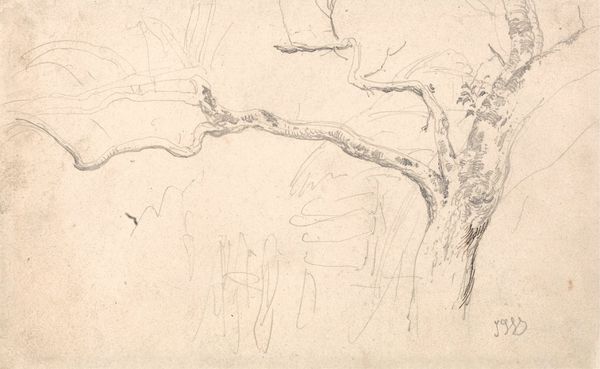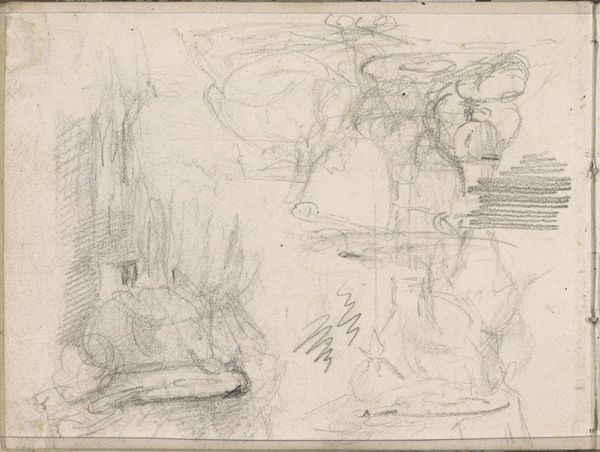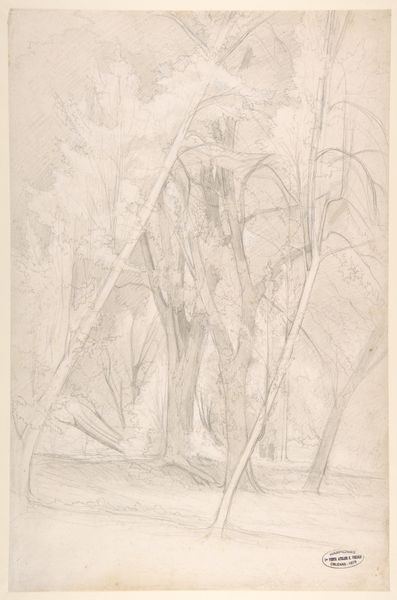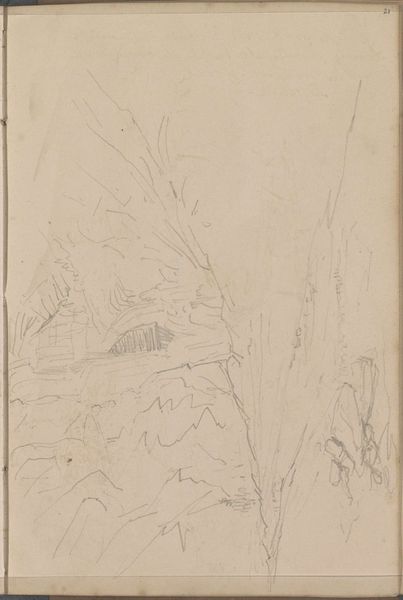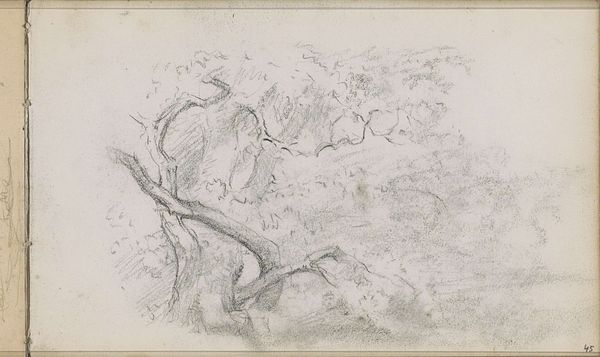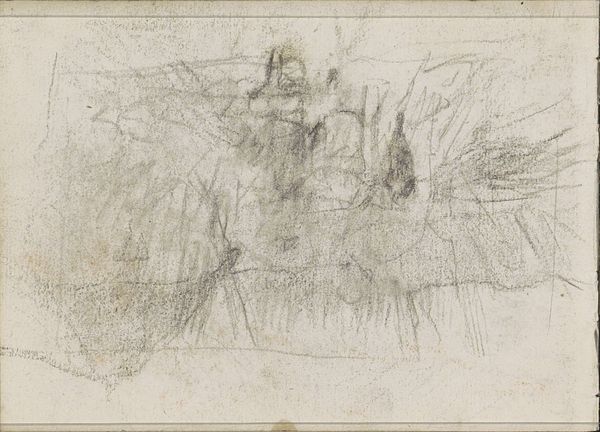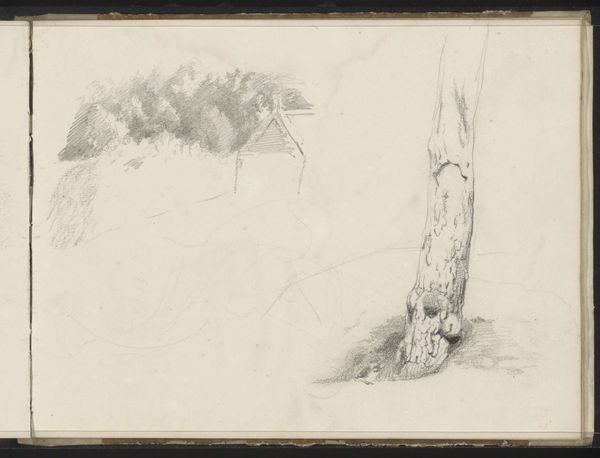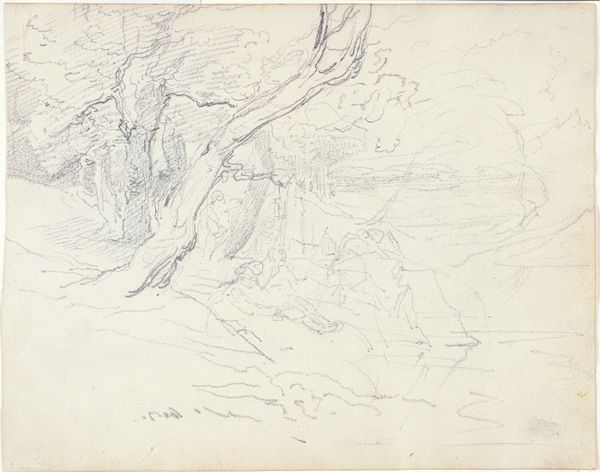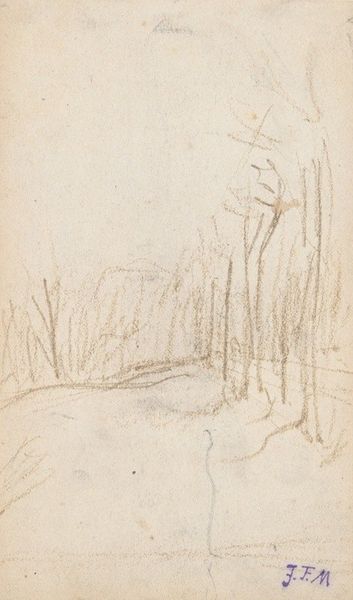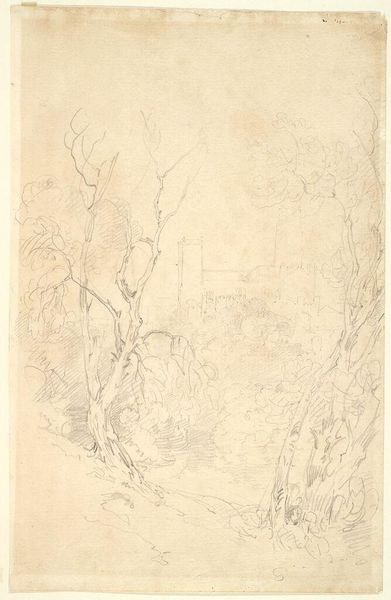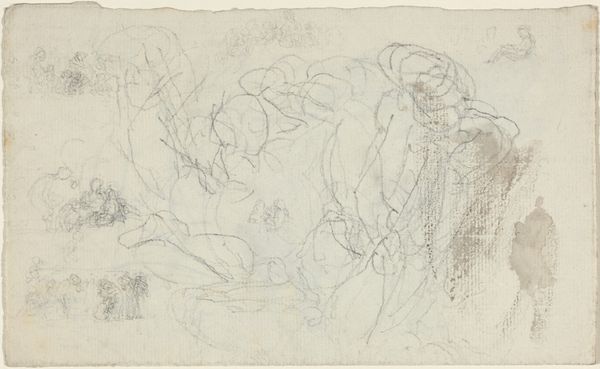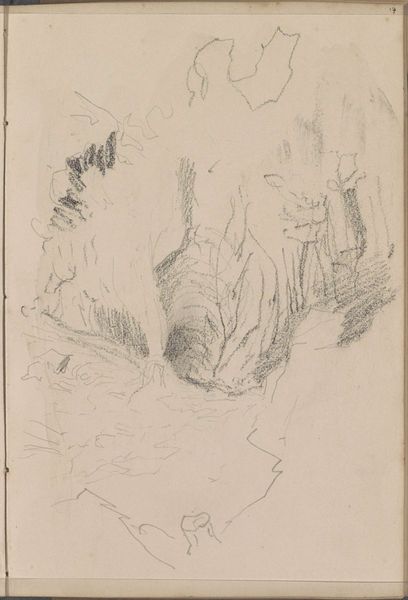
drawing, pencil, graphite
#
drawing
#
impressionism
#
pencil sketch
#
landscape
#
pencil
#
graphite
#
sketchbook drawing
Dimensions: height 220 mm, width 163 mm
Copyright: Rijks Museum: Open Domain
Editor: Here we have Matthijs Maris’ "Schets van een landschap," a landscape sketch in graphite and pencil, made sometime between 1849 and 1917. It's really faint, almost ethereal. What do you see in this piece, particularly in how it relates to its time? Curator: It’s a fascinating glimpse into the artistic anxieties of the late 19th century. Maris, though rooted in the Hague School, demonstrates a move away from rigid realism. Look at the vagueness of the forms – do they suggest a deliberate obscuring, perhaps a rejection of the societal pressures to depict a picturesque, idealized landscape? Editor: I hadn’t thought about it as a rejection. More like an… impression. A feeling. Curator: Exactly. And whose feelings are privileged here? Was Maris perhaps grappling with his own artistic identity in a rapidly changing world, where the function of art itself was being questioned? The muted tones, the almost hesitant lines... it speaks volumes about the individual versus the collective expectation. How might Maris's personal struggles reflected in this sketch resonate with the social upheaval and search for authenticity prevalent at the time? Editor: So, beyond just a landscape, it's also kind of a… statement? A quiet rebellion, maybe? Curator: Precisely. And considering his later, more symbolist works, this sketch can be viewed as a nascent stage in his personal artistic revolution. Consider it a quiet but forceful challenge against artistic and social norms. Editor: That's a very different perspective than how I initially saw it! It’s amazing how much historical context shapes our understanding. Curator: Indeed. Art is rarely created in a vacuum. Looking closely reveals those silent conversations with history, society, and self.
Comments
No comments
Be the first to comment and join the conversation on the ultimate creative platform.
